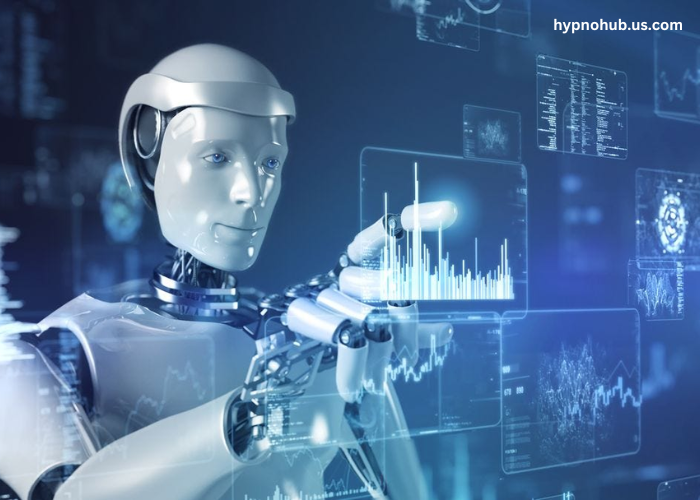Artificial Intelligence (AI) is rapidly transforming our world, with breakthroughs that are reshaping industries, enhancing daily life, and solving complex challenges. From healthcare to climate change, AI’s impact is profound, as it learns from vast datasets, optimizes processes, and even redefines human capabilities. This article explores some of the most significant AI breakthroughs that are helping to shape our future.
1. Revolutionizing Healthcare with AI
One of the most transformative areas of AI is healthcare. Advances in machine learning and data analytics are enabling more accurate diagnoses, personalized treatments, and drug development. AI-powered tools like deep learning algorithms have proven invaluable in detecting diseases such as cancer, often identifying early-stage conditions with higher accuracy than human doctors. For example, Google’s DeepMind has created AI systems that can analyze eye scans to predict conditions like diabetic retinopathy, while IBM’s Watson has assisted in tailoring treatment plans for cancer patients based on genomic data.
AI is also accelerating the pace of drug discovery. Traditional drug development is time-consuming and expensive, but AI can analyze vast amounts of data to predict which compounds are most likely to be effective. This has led to quicker identification of potential treatments, particularly in the context of global challenges like the COVID-19 pandemic, where AI models contributed to vaccine development in record time.
2. Advances in Natural Language Processing
Natural Language Processing (NLP) has seen remarkable advancements in recent years. AI systems like OpenAI’s GPT-4, and Google’s BERT, can understand, generate, and translate human language with unprecedented fluency. These models are capable of performing complex tasks such as writing essays, summarizing information, answering questions, and even generating creative content like poetry and fiction.
The application of NLP in industries like customer service, marketing, and content creation is reshaping the way businesses interact with customers. Chatbots powered by AI, for instance, are increasingly handling customer inquiries with human-like responses, improving user experiences and reducing costs. As NLP technologies improve, the line between human and machine communication continues to blur, paving the way for a more seamless interaction between AI systems and people.
3. Autonomous Vehicles and Transportation
AI’s role in autonomous vehicles is a game-changer for the future of transportation. Self-driving cars, trucks, and drones are becoming more reliable thanks to AI-powered sensors, machine learning algorithms, and real-time decision-making capabilities. Companies like Tesla, Waymo, and Cruise are leading the charge in developing autonomous vehicles that have the potential to make transportation safer, more efficient, and less reliant on human drivers.
AI systems in autonomous vehicles can predict and respond to a variety of scenarios on the road, from traffic lights and pedestrians to unpredictable weather conditions. These breakthroughs could drastically reduce traffic accidents, lower transportation costs, and contribute to sustainability by optimizing energy usage in electric vehicles. In addition, AI-driven innovations in logistics are reshaping supply chains, enhancing efficiency in deliveries, and reducing delays.
4. AI in Climate Change and Sustainability
Climate change is one of the most pressing issues facing humanity, and AI is playing a crucial role in addressing it. AI technologies are being used to analyze environmental data, predict climate patterns, and develop solutions for energy conservation and waste reduction. For example, AI-powered models are helping scientists predict weather events, track deforestation, and monitor carbon emissions, providing critical insights that inform policy decisions.
Furthermore, AI is helping optimize energy usage in industries and households by predicting energy demand and adjusting usage in real-time. Smart grids and AI-driven systems are making renewable energy sources, such as wind and solar, more efficient by balancing supply and demand. In agriculture, AI is used for precision farming, allowing farmers to optimize water usage, reduce pesticide application, and increase crop yields, all of which are critical for addressing food security and environmental sustainability.
5. AI and Creativity: The Intersection of Art and Algorithms
AI’s creativity is also making waves in the arts. Artists, musicians, writers, and designers are collaborating with AI tools to produce new and innovative works. AI algorithms can generate original art, compose music, and even write screenplays. These systems learn from vast amounts of data, enabling them to replicate styles, generate new ideas, or even challenge traditional notions of creativity.
AI-generated art has sparked debates about authorship and originality, yet it also opens new possibilities for human expression. For example, AI-powered tools like DALL·E and MidJourney are allowing artists to generate unique images from simple text prompts, providing a new medium for creative expression. In music, AI is being used to compose original pieces, often blending genres and styles in ways that human composers may not have considered.
6. AI Ethics and Responsible Development
While AI offers immense potential, it also raises significant ethical concerns. As AI systems become more integrated into critical aspects of life, issues such as privacy, bias, and job displacement must be carefully addressed. AI-driven decision-making systems, such as those used in hiring, law enforcement, and lending, have shown that algorithms can perpetuate biases if not carefully designed and tested. There is also the risk of AI being used in harmful ways, such as creating deepfakes or invading privacy.
The growing presence of AI has led to the development of ethical frameworks and guidelines to ensure that AI systems are developed and deployed responsibly. Researchers, policymakers, and tech companies are working together to create laws and standards that prioritize transparency, fairness, and accountability in AI systems. Ensuring that AI technologies are used for the greater good will be key in navigating the future of AI.
7. The Future of Work: AI and Automation
AI is also transforming the workforce. Automation powered by AI is improving efficiency in industries like manufacturing, retail, and logistics, but it also brings challenges related to job displacement. While AI has the potential to eliminate some types of jobs, it also creates new opportunities in fields such as AI research, data analysis, and robotics engineering.
The future of work will likely involve humans and AI systems working alongside each other, with AI taking over repetitive, mundane tasks, allowing humans to focus on more complex and creative endeavors. To prepare for this shift, governments and businesses must invest in education and reskilling programs to ensure that workers are equipped with the skills necessary to thrive in an AI-driven economy.
Conclusion
AI is not just a technological revolution; it’s a societal transformation. Breakthroughs in AI are unlocking new possibilities in every sector, from healthcare and education to entertainment and sustainability. While these advancements offer significant benefits, they also require careful consideration of ethical implications and the need for responsible development. As we continue to innovate, AI will undoubtedly play a pivotal role in shaping the future of humanity, driving progress and helping to solve some of the world’s most pressing challenges.





